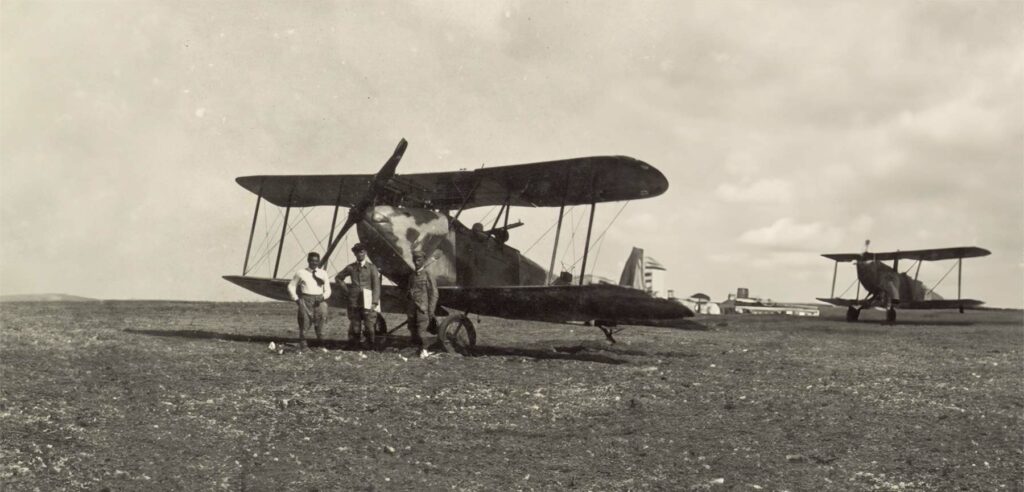Explore the AEG C.IV, a 1916 German biplane with advanced reconnaissance capabilities, notable for its reliable performance in WWI and significant impact on aerial warfare.
The AEG C.IV was a German two-seat biplane developed during World War I. It played a crucial role in reconnaissance and light bombing missions. This article delves into its historical context, design features, performance parameters, and military use, highlighting its significance in early 20th-century aerial warfare.
The AEG C.IV was a significant aircraft of World War I, representing advancements in aerial technology and tactics during a critical period in military history. Developed by the Allgemeine Elektrizitäts-Gesellschaft (AEG), it was primarily used for reconnaissance and light bombing, showcasing the evolving role of aircraft in warfare.
History of the Development of the AEG C.IV
Context of the Era
In the early 20th century, the concept of using aircraft in warfare was still in its infancy. The onset of World War I accelerated the development of military aviation, as countries realized the strategic advantage of controlling the skies. During this time, Germany, like other major powers, invested heavily in aircraft technology.
Need and Objective
The German military recognized the need for an effective reconnaissance aircraft that could also undertake light bombing missions. The AEG C.IV was developed to fulfill these roles, aiming to improve upon its predecessors in terms of range, payload, and reliability.
Development and First Flight
The development program for the AEG C.IV was launched by AEG, a prominent German electrical and industrial firm which had ventured into aircraft production. The design process focused on creating an aircraft that was both sturdy and versatile. The AEG C.IV made its first flight in 1916, showcasing its potential as a multi-role aircraft.
Design of the AEG C.IV
Technical Specifications
The AEG C.IV was a two-seat biplane with a length of 23 feet (7.01 meters) and a wingspan of 42 feet (12.8 meters). It was constructed primarily of wood and fabric, a standard practice of the era.
Advantages and Drawbacks
One of its main advantages was its reliability and ease of maintenance, crucial for operations in the demanding conditions of World War I. However, its performance was limited by the technology of the time, particularly in terms of speed and maneuverability.

Performance of the AEG C.IV
Engine and Power
Powered by a 160 horsepower Mercedes D.III six-cylinder water-cooled inline engine, the AEG C.IV had a top speed of around 87 mph (140 km/h). This power plant was a common choice for German aircraft of the period.
Altitude and Range
It had a service ceiling of approximately 9,840 feet (3,000 meters) and a range of 350 miles (563 kilometers), respectable figures for reconnaissance missions of the time.
Comparison with Competitors
When compared to contemporaries like the British Royal Aircraft Factory R.E.8, the AEG C.IV offered comparable performance. However, it was generally outclassed by newer designs as the war progressed.
Military Use and Combat of the AEG C.IV
Armament
The AEG C.IV was armed with a forward-firing Spandau machine gun for the pilot and a Parabellum machine gun on a ring mount for the observer, providing decent defensive capabilities.
Combat and Operations
It served primarily on the Western Front, conducting reconnaissance and light bombing missions. The aircraft was involved in several notable operations, providing valuable intelligence and support for ground troops.
Competing Aircraft and Export
It competed against aircraft like the aforementioned R.E.8 and the French Breguet 14. Several units were sold to the Ottoman Empire, highlighting its perceived value beyond German forces.
Service Duration and Replacement
The AEG C.IV was eventually superseded by more advanced designs, such as the AEG C.VI, and was phased out of frontline service. However, its contribution during its operational period was significant.
The AEG C.IV stands as a testament to the rapid development of military aviation during World War I. Its role in reconnaissance and light bombing missions underscored the growing importance of aerial assets in warfare, setting the stage for future advancements in military aircraft design and strategy.
Back to the Warbirds section.